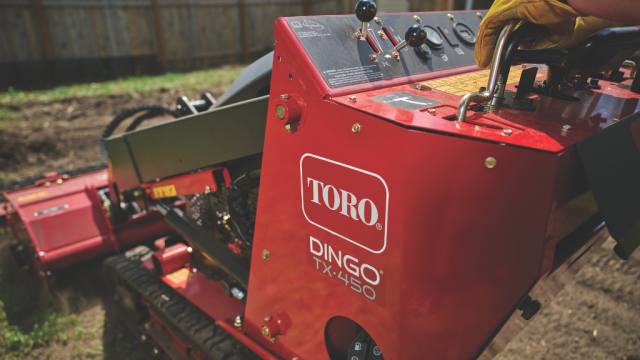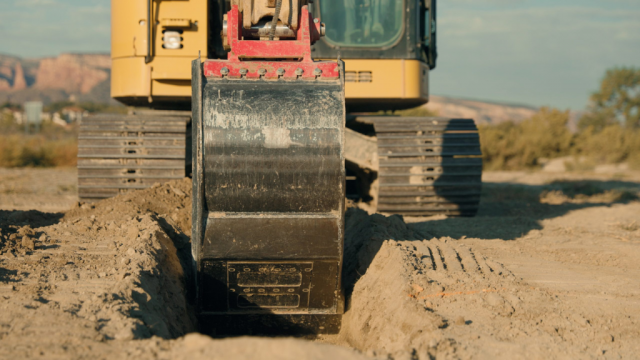U.S. Roads Get "D+"; Bridges a "C" in ASCE's 2025 Infrastructure Report Card
The road grade rose from a 'D,' partly due to the falling percentage of major roads in “poor or mediocre” condition since 2020...

The latest Infrastructure Report Card from the American Society of Civil Engineers gives U.S. roads a "D+" rating – up from a "D" – while bridges held their "C" rating from the last report.
Part of the grade improvement for roads comes from the falling percentage of major roads in “poor or mediocre” condition since 2020, as well as the decline in road fatalities, though still high at 40,990 in 2023. Despite improvements, the average U.S. driver still loses $1,400 per year in vehicle costs and time driving on deteriorated and congested roads.
The report emphasized the rising number of U.S. bridges rated in “fair” condition, which continue to age and risk falling into “poor” condition. It noted that “fair” bridges can be maintained as a lower cost than “poor” bridges. Careful management and routine maintenance are key, which can be helped by the $1.2 trillion Infrastructure Investment & Jobs Act of 2021 that comes with a $27.5 billion Bridge Formula Program and $12.5 billion Bridge Investment Program.
The ASCE reported that half of its 18 assessed categories improved their grades compared to the previous report, though it noted sustained investments are still needed.
The group attributed the incremental improvements to a series of recent federal investments, which brought the country’s overall previous "C-" up to a "C."
The report called this promising momentum, though it said the industry is still facing a substantial investment gap and hesitance toward more expensive resilience-focused modernization and replacement of infrastructure.
ASCE gave out the following grades this year in its 18 categories. Broadband was added for the first time in this year’s report.
- Aviation: D+
- Bridges: C
- Broadband: C+
- Dams: D+
- Drinking Water: C-
- Energy: D+
- Hazardous Waste: C
- Inland Waterways: C-
- Levees: D+
- Ports: B
- Public Parks: C-
- Rail: B-
- Roads: D+
- Schools: D+
- Solid Waste: C+
- Stormwater: D
- Transit: D
- Wastewater: D+
Categories that saw an increase in their grades included dams, hazardous waste, inland waterways, levees, ports, parks, roads and transit. Energy and rail were the only categories to shift down slightly from their previous scoring. No category moved more than a half letter grade up or down since the previous report in 2021.
Among these 18 categories, ASCE reports $5.5 trillion of funding is planned between 2024 and 2030. However, the group estimates the actual needed funding for this infrastructure is $9.1 trillion.
The funding gap for bridges was reported at $373 billion, and $684 trillion for roads.
The ASCE has released the report card every four years since 1998 and uses the following grading scale:
- A: Exceptional, Fit for the Future
- B: Good, Adequate for Now
- C: Mediocre, Requires Attention
- D: Poor, at Risk
- F: Failing/Critical, Unfit for Purpose
Infrastructure is graded based on factors including its capacity to meet current and future demands, current versus needed funding, owners’ ability to operate and maintain structures and the possible consequences of a structure failure.
The ASCE was founded in 1852 and represents over 160,000 civil engineers.
Raising the Grade: Bridges
Bridges maintained a "C" rating from the 2021 study, though did not reclaim the "C+" it received in 2017.
Key issues impacting the unchanging grade include the rising number of “fair” condition bridges in the U.S. surpassing those in “good” condition and $191 billion in bridge-related system rehabilitation needs.
ASCE recommended ways the bridge grade could be improved:
- Determine the entire life-cycle cost of a bridge to inform smart design decisions and develop a balanced approach for the aging bridge inventory.
- Increase funding from all levels of government to continue bridge repair, rehabilitation, operation, maintenance and replacement.
- Continue the use of traditional user fees for transportation funding while transitioning to more sustainable and equitable innovative user fees.
- Prioritize rehabilitating and preserving bridges in fair condition, as these bridges can often be maintained at a lower cost than would be required to replace the structure.
- Fund research into technologies, materials and techniques to extend and preserve the life of bridges.
Raising the Grade: Roads
After receiving back-to-back "D" ratings in 2017 and 2021, ASCE bumped up the roads category this year with a "D+." Key factors included the declining percentage of poor condition roads in the U.S. and fewer road fatalities.
Additionally, the IIJA brought a five-year renewal of federal surface transportation programs, including $273 billion in formula funding through the federal-aid highway program. Since the law’s singing, work has begun on over 200,000 miles of roads.
However, the industry still faces issues including the declining purchasing power of the federal gas tax, the impacts of extreme weather and changing patterns of road use since the Covid-19 pandemic.
ASCE recommended ways the road grade could be improved:
- Dedicate resources to preserving a state of good repair and design new capacity to support multimodal transportation options.
- Optimize the capacity of the existing network in coordination with new technologies and intelligent transportation systems to promote an integrated, multimodal transportation network.
- Inform decisions about road capacity using travel time reliability data
- Increase funding from government and private sector partners to improve the condition and operations of the transportation system
- Encourage states and localities to develop transportation asset management plans that incorporate asset management efforts with long-term transportation planning and use life-cycle cost analysis.

 machineryasia
machineryasia 








